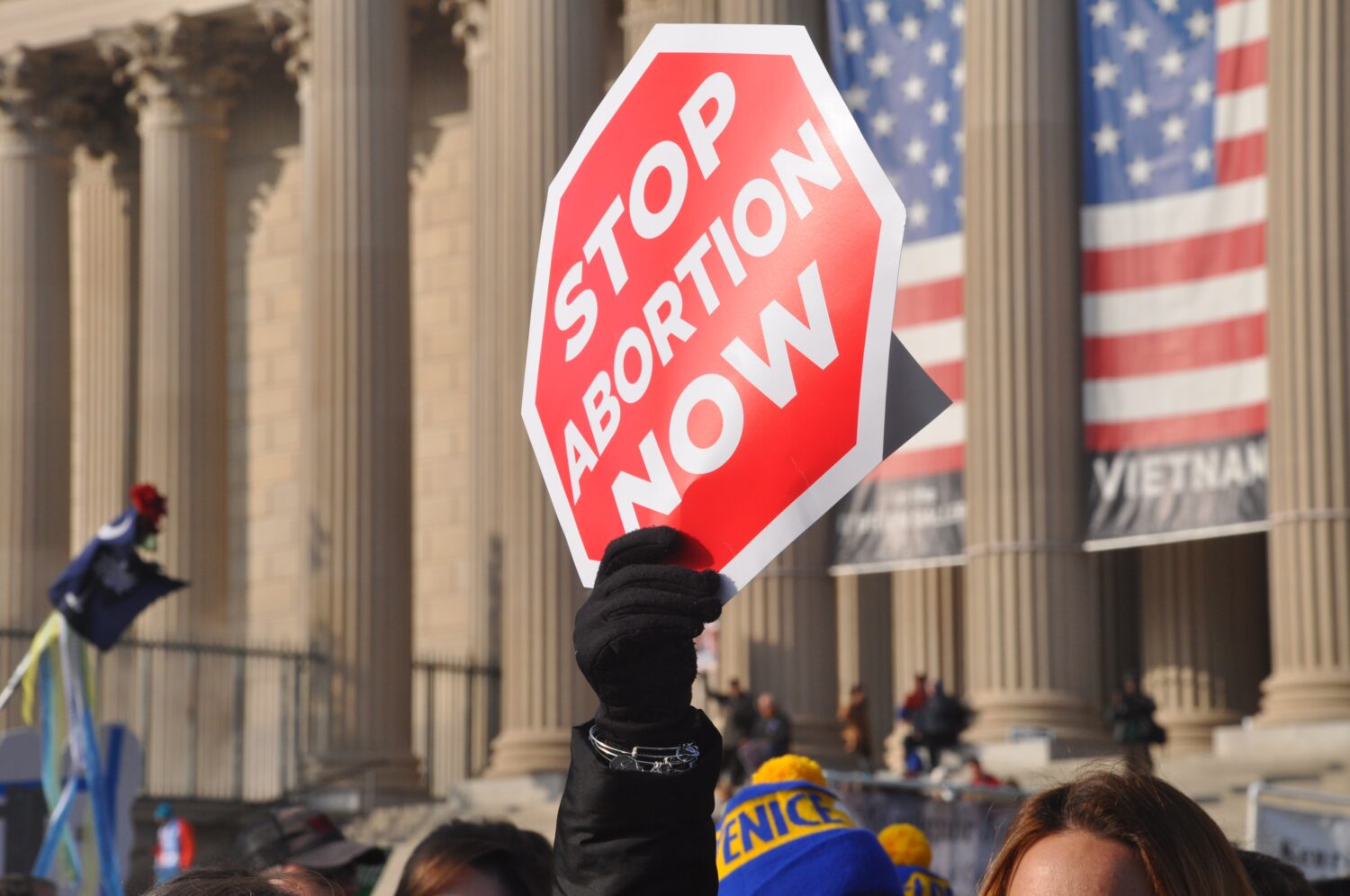
Insufficient abortion data fails to fully assess the post-Dobbs landscape
A protestor holds an anti-abortion sign during a March for Life protest in Washington, D.C.
Photo by Maria Oswalt on Unsplash
We may never know the full impact on reproductive health and pregnant people resulting from last year’s Supreme Court decision, Dobbs v. Jackson Women’s Health, which returned the right to restrict abortion to the states. This was the jarring message delivered by University of Colorado professors Amanda Stevenson and Kate Coleman-Minahan during their deep dive into the post-Dobbs abortion landscape at the Council for the Advancement of Science Writing’s New Horizons in Science briefing at ScienceWriters2023 in Boulder, Colo., on Oct. 7.
“Don’t trust the CDC [Centers for Disease Control and Prevention] when it comes to abortion,” said Stevenson. “Official abortion stats by CDC are consistently wrong.”
Stevenson is in the business of numbers — finding a way to measure the impact of health policies on the communities they affect. Doing her job becomes significantly harder when data isn’t available.
Central health agencies for each state control whether to collect or share patient data on abortion with federal government entities, like the CDC. The CDC is now powerless to accurately define one of the biggest healthcare controversies in recent memory—the decision to overturn Roe v. Wade, a previous ruling by the court protecting the right to abortion.
The legal decision unleashed a flurry of state “trigger laws” that automatically banned abortion upon overturning Roe v. Wade. Since the ruling, 21 states have banned abortion or placed time restrictions on when an abortion can legally occur, according to the New York Times abortion ban tracker.
“Just because there is a state where abortion is still legal, doesn’t mean there aren’t other restrictions,” said co-presenter and collaborator Coleman.
The lack of public health data monitoring of abortion in the U.S. has presented public health researchers with significant difficulty in evaluating the consequences of the decision.
“We know very little about the impacts of Dobbs,” Stevenson said.
Researchers are left to fill in the gaps by trying to obtain a more accurate count of the number of abortions occurring in the U.S. The Guttmacher Institute, a research organization focusing on reproductive health and rights, has led the charge by instituting a Monthly Abortion Provision Study nationwide.
The institute contacts all known abortion providers directly, unlike the CDC, and protects the identity of each respondent. This aids in providing significantly more comprehensive national and state estimates of the number of abortions performed each month. Their numbers consistently disagree with the CDC’s, suggesting possible underreporting and inaccurate assessment of abortion numbers in the U.S.
Potential health risks in a post-Dobbs landscape
Childbirth comes with inherent risks. One commonly cited study indicates that the risk of death during childbirth could be up to 14 times higher than the risk of death from an abortion.
Stevenson’s work drives home the inherent risk of mortality in the post-Dobbs landscape by using past measurements of pregnancy-related deaths to estimate the consequences of a hypothetical nationwide abortion ban. Drawing on abortion and birth statistics in 2014-17 from the Guttmacher Institute, she developed a mathematical model that estimated a 7% increase in pregnancy-related deaths within the first year alone. Consecutive years could see an increase of up to 21%.
“That’s assuming that pregnancy stays only as deadly as it was before Dobbs,” said Stevenson. “But we know that pregnancy has gotten more dangerous.”
According to the CDC, the pandemic sparked a dramatic spike in maternal mortality rates. That trend that has only been compounded by restricted access to health care after Dobbs, added Stevenson.
Mortality, though the most striking of potential anti-abortion consequences, is not the only outcome scientists are investigating. An ongoing study by Coleman-Minahan dives into the rate of near-death experiences that could occur under a nationwide ban. “These are very severe conditions [related to pregnancy] that often have negative consequences on someone’s life after delivery,” Coleman-Minahan said.
She pulled data from 2020 to investigate maternal near-death experiences under the hypothetical nationwide ban. Coleman-Minahan and colleagues predict that there would be a 20% increase in these incidents (roughly an additional 1,000 pregnant persons), placing maternal health at significantly greater risk.
The researchers pled with science journalists covering the Dobbs fallout to think carefully about the meaning of a balanced debate. Stevenson describes the science of some groups as “quackery” and emphasized the danger in giving credence to ill-conceived counter arguments.
“The science has to be excellent for these conversations to be anything but absurd,” she said.